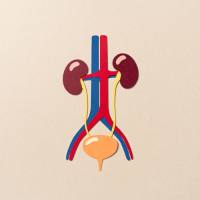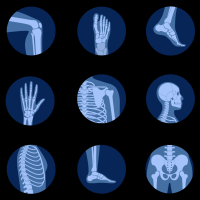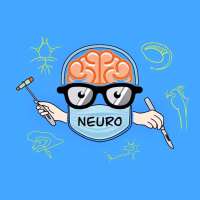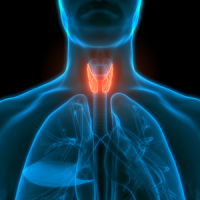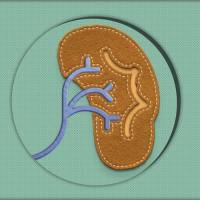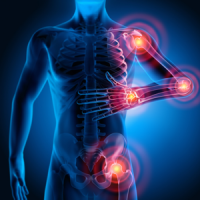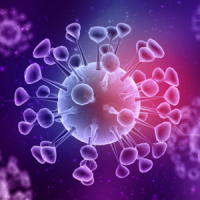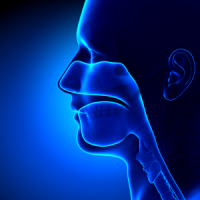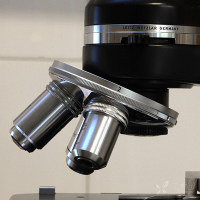【每日动态】危重哮喘患儿二三线治疗研究进展
Asthma is a common and potentially life threatening childhood condition. Asthma involves not only chronic airway remodeling, but may also include frequent exacerbations sulting from bronchospasm, edema, and mucus production. In children with severe exacerbations,standard therapy with b2-agonists, anti-cholinergic agents, oxygen, and systemic steroids may fail to reverse the severe airflow obstruction and necessitate use of adjunctive therapies.These therapies include intravenous or inhaled magnesium, inhaled helium-oxygen mixtures,intravenous methylxanthines, intravenous b2-agonists, and intravenous ketamine. Rarely, these measures are not successful and following the initiation of invasive mechanical ventilation,inhaled anesthetics or extracorporeal life support may be required. In this review, we discuss the mechanisms and evidence for adjunctive therapies in the setting of severe acute asthma exacerbations in children.Asthma, affecting more than 300 million people, is one of the most common chronic diseases worldwide [1]. Prevalence varies according to geographical regions, with highest prevalence (10.9-18.4%) in countries like the UK, Australia, Canada, the USA and Brazil.However, highest mortality from asthma (20.8-36.7 per 100,000 patients) comes from regions with low asthma prevalence (e.g., China, Russia, Uzbekistan and Albania) [2,3]. Data from the US CDC demonstrate an increase in incidence of pediatric asthma and continued rise in healthcare resource utilization over the past 10 years [4]. Despite the continued rising cidence,
mortality rates from asthma in the USA have fallen from 0.21 to 0.14 per 1000 persons in the past decade [5]. Among children presenting with a severe exacerbation of asthma,
approximately 8-16% require pediatric intensive care unit (PICU) admission and <2% require invasive mechanical ventilation [6-8].
The pathophysiology of an acute asthma exacerbation involves three main mechanisms:bronchospasm, inflammation and edema of the bronchial mucosa and increased mucus production [9]. The airway epithelium is a target for infectious, noxious and environmental insults that cause injury by influx of proinflammatory cells and cytokines. Proinflammatory cytokines, chemokines as well as Th2 lymphocytes, eosinophils and mast cells have distinct roles in asthma pathogenesis. Asthma is also characterized by structural airway remodeling in the epithelium, which includes mucous gland hyperplasia, epithelial basement membrane thickening, sub-basement membrane fibrosis, bronchial smooth muscle ertrophy and angiogenesis [9].Though most children have mild-to-moderate asthma, these children remain at risk for developing a severe acute exacerbation that may ecessitate admission to the PICU. 'Severe acute asthma exacerbation', also termed 'status asthmaticus', is defined as an asthma exacerbation that does not respond to repetitive or continuous administration of short-acting inhaled b2-adrenergic receptor agonists [2]. The terms 'fatal asthma', 'near-fatal asthma' and 'catastrophic asthma' describe the presence
of hypercapnia, hypoxemia and impending respiratory arrest in the setting of a severe exacerbation [3]. 'Acute asphyxial asthma' is characterized by a sudden onset that may
rapidly progress to a near-arrest state [10]. Kenyon et al. proposed the term 'critical asthma syndrome' to encompass all of these entities [11]. Critical asthma syndrome is used to describe any child or adult at risk of physical exhaustion from the overwhelming work of breathing, which may lead to respiratory arrest and death from hypoxia or related complications from asthma.
The first-line treatment strategies for acute asthma exacerbations include supplemental oxygen, inhaled short-acting b2-agonists in combination with anticholinergics, and systemic steroids [12]. Occasionally, despite aggressive treatment with these conventional therapies, children with asthma will have persistent and severe airflow obstruction. In these circumstances,a combination of adjuvant therapies may be attempted with or without the initiation of invasive or non-invasive mechanical ventilation. Adjunctive therapies should be considered when conventional treatment fails and signs and symptoms of deteriorating airflow and respiratory muscle fatigue are developing. These adjunctive therapies are the focus of this review and they include intravenous (iv.) or inhaled magnesium sulfate, inhaled helium-oxygen mixtures (heliox), iv. aminophylline/ theophylline, iv. b2-agonists, inhaled anesthetics and iv.
ketamine.
We used the Oxford Centre for Evidenced Based Medicine (2009) hierarchy of best evidence to evaluate and describe the levels of evidence of available studies [13]. Systematic reviews of randomized controlled trials (RCTs) (1a) and individual RCTs (1b) form the highest level of evidence. Studies that unequivocally demonstrate survival of patients after instituting a therapy for a condition previously lethal constitutes level 1c evidence.Systematic reviews of cohort studies (2a) and individual cohort studies (2b) form the next hierarchy. The next hierarchy involves systematic reviews of case-control studies (3a) and individual case-control studies (3b). Level 4 evidence derives from case series and level 5 from expert opinion. For each adjunctive therapy, we described studies that constitute the highest level of evidence. For all studies, we critically appraised the strengths and limitations, and downgraded the level of evidence for several therapies due to significant risk of bias, inconsistency and indirect results (FIGURE 1).
Intravenous & inhaled magnesium sulfate Magnesium facilitates uptake of calcium into the sarcoplasmic reticulum, inhibits slow inward calcium current and impedes calcium-induced calcium release, which causes a decrease in intracellular calcium, leads to smooth muscle relaxation and bronchodilation [14]. Magnesium also inhibits mast cell degranulation, thus reducing histamine and prostaglandin release [15].
In addition, magnesium decreases the amount of acetylcholine liberated at motor nerve endings, which results in decreased muscle fiber excitability [16]. Magnesium has been shown to produce a bronchodilator effect in a dose-dependent manner in patients with mild-to-severe asthma [17].
A total of six RCTs have examined the use of iv. Magnesium in emergency care for children with moderate-to-severe exacerbations (TABLE 1) [18-23]. A meta-analysis including five of these studies found that iv. magnesium decreased hospital admission rate (odds ratio [OR]: 0.290; 95% CI: 0.143-0.589; p = 0.0006), with a number needed to treat of 4 (95% CI: 3-8). Other secondary outcomes that improved with iv. Magnesium include short-term lung function (OR of persistently low peak expiratory flow rate <60% was 0.155; 95% CI: 0.057-0.422; p = 0.0003) and clinical symptom scores (clinical asthma symptom score or pulmonary index score) [18,19,21,22].
This meta-analysis also found that iv. magnesium was generally safe and there were no major side effects, including hypotension [24]. The sixth RCT, performed by Torres et al., found that iv. magnesium sulfate within the first hour of admission in children with acute severe asthma significantly reduced the need for mechanical ventilation (5 vs 33%; p = 0.001), PICU length of stay (LOS) (2 vs 10 days; p = 0.0367) and hospital LOS (7 vs 19 days; p = 0.046) [25]. An important consideration is that the documented efficacy of iv. magnesium in these studies should be interpreted in conjunction with the concurrent use of b2-agonists and clinical context. All six studies were conducted in the emergency department (ED) and only three of the six studies (TABLE 1) had a clear protocol for the use of bronchodilators. Of note, all studies utilized a single dose of iv. Magnesium sulfate between 25 and 75 mg/kg over 20 min early in the course of treatment. None of these investigations studied the benefits of a continuous infusion after the single bolus dose, despite pharmacokinetic studies in pediatric asthma that report safety in using a continuous infusion of magnesium sulfate at a dose of 14.6-40 mg/kg/h [26-28]. One retrospective study described the use of a continuous infusion of magnesium sulfate in 40 PICU patients [27]. The mean serum magnesium levels achieved were 3.8 mg/l in this cohort. A separate case series described 19 PICU patients who were treated with a loading dose of iv. magnesium followed by a continuous infusion for 4 h. A mean serum magnesium level of 4.4 ± 0.8 mg/dl was achieved in this case series [28]. However, both these studies did not report the clinical effects of the treatment, and there are no established dosing regimens or target serum magnesium or ionized magnesium concentrations for the optimal treatment of patients with asthma [28]. Even though there is a lack of definitive evidence for the use of iv. magnesium in the PICU, it is one of the more commonly utilized adjunctive therapies in the pediatric critical care setting [7]. The Pediatric Health information System reported the use of iv. magnesium in 20% of non-ventilated patients and 40% of ventilated patients admitted into the PICU, and the Collaborative Pediatric Critical Care Research Network reported an overall 40% use in their cohort [7,8].
Nebulized magnesium has also been investigated in this context, and four RCTs have been published examining the efficacy of nebulized magnesium in children with mixed results
(TABLE 2) [29-32]. A Cochrane meta-analysis in 2012 that combined adult and pediatric data concluded that there is currently no evidence for improved pulmonary function or
reduced hospital admissions in children with asthma who are treated with nebulized magnesium [33]. The largest RCT of nebulized magnesium to date was published recently and involved 502 children with moderate-to-severe exacerbations of asthma [34]. This investigation demonstrated that nebulized magnesium improved the Asthma Severity Score at 1 h (mean difference after adjusting for baseline severity -0.25 [95% CI: -0.48 to -0.02]; p = 0.034), but this result did not meet the predetermined clinically relevant difference of 0.5. Subgroup analysis investigating treatment-covariate interactions found that those with lower initial oxygen saturation (<92%) and those who were able to initiate nebulized magnesium therapy early (<6 h into the exacerbation) had greater response. This subgroup of patients had a greater improvement in Asthma Severity Scores at 1 h post-randomization. The doses of nebulized magnesium used in all four studies ranged from 2 to 2.5 ml of isotonic magnesium sulfate or heptahydrate nebulized over 10-15 min with or without repeated doses (dosage and concentration included in TABLE 2). Only one study reported adverse effects, which were flushing, vomiting, headache and transient ypotension in children treated with nebulized magnesium, but these findings were not statistically significant when compared with controls [34].
In summary, iv. magnesium reduces hospital admission rates, LOS and intubation rates when administered early in the course of illness, but there is little evidence for its continued use in the PICU. Studies examining the efficacy of continuous magnesium infusion therapy are needed to clarify the potential benefit of this therapy. Data to support the benefit from nebulized magnesium are not robust and come from analysis of small subgroup of asthmatic patients. In addition, we do not have data to support the use of nebulized magnesium beyond the ED, and more studies are required to define the role of this therapy in the management of acute asthma exacerbations.
Heliox (helium-oxygen mixtures) Helium is an odorless, tasteless, inert gas that is substituted for nitrogen and delivered at concentrations of more than 50% for medical use [35]. It has no direct pharmacologic or biologic effects and does not have bronchodilatory or anti-inflammatory properties [36]. Heliox refers to a gas mixture combining helium and oxygen in either 70:30 or 80:20% ratios. This mixture is less dense compared with air and air/oxygen mixtures and results in decreased resistance to gas flow in turbulent systems [36]. Decreased gas density also transitions turbulence to a laminar flow state, creating a lower resistance situation [36]. This decrease in density with heliox is linear as the proportion of helium is increased. While higher fractions of helium are preferred to minimize gas density and improve flow, lower proportions of helium may have some efficacy.Thus, an improvement in spirometry measurements and work of breathing may be anticipated with the use of heliox [37-39]. Review: adjunctive therapies for severe acute asthma exacerbation in critically ill children Review The conducting airways provide the dominant component of flow resistance and are the region where turbulent or near-turbulent flows occur.This results in entrainment of aerosols that are often administered in the management of an asthma exacerbation. Therefore, another additional mechanism of action of heliox is increased delivery of aerosolized drugs deeper into the lungs [40]. In addition, carbon dioxide (CO2) diffuses four- to
five-times faster through helium than air, leading to increased clearance of CO2 [36].
To date, five RCTs have examined the use of heliox in children with asthma (TABLE 3) [37,40-43]. A metaanalysis involving both adults and children concluded that heliox improves pulmonary function only in the subgroup of patients with the most severe impairment of baseline pulmonary function [44]. This meta-analysis only included three out of the five pediatric RCTs. One RCT was excluded because of incomplete data and the use of an unvalidated clinical score, and the patients in this RCT treated in the PICU were not described in detail [41]. The other RCT that was not included was published after the completion of the meta-analysis [42].
In this study, 34 patients were treated in the PICU and the authors found no difference in the time to achieve a clinical asthma score <3 in the heliox group compared with the control group (24.4 ± -2.8 vs 23.7 ± 5 h, respectively; p = 0.34) [42]. These PICU patients also demonstrated no difference in duration of continuous nebulized albuterol administration in both groups (25.6 ± 4.6 vs 24.3 ± 5.8 h, respectively; p = 0.51).
While two RCTs reported improvement in surrogate markers (e.g., pulsus paradoxus, clinical scores and spirometry parameters) [40,41], none of the studies demonstrated benefits in clinical outcomes such as admission rate, LOS and intubation rate. Of note, there were no adverse effects from this therapy reported in any of the studies. It is difficult to form a definitive conclusion with regard to the utility of heliox based on current studies because of the heterogeneity of patient groups, degrees of illness, timing of intervention and outcome measures [36]. The currently available investigations also were underpowered to detect a difference in clinical outcomes.
There are no data to support routine use of heliox in acute asthma; however, this therapy is based on sound physiologic principles, can be safely administered and may provide benefit for patients with severe impairment of lung function. Intravenous methylxanthine Theophylline is a dimethylated xanthine that has been used as a bronchodilator for both acute and chronic reversible airway disease [45]. Aminophylline is the ethylene diamine salt of theophylline and is more commonly used in the treatment of critical asthma, because it has higher water solubility for iv. administration [45]. Methylxanthine derivatives reduce the rate of degradation of cAMP by inhibition of phosphodiesterase [46].
Other potential mechanisms of action are associated with changes in intracellular calcium, prostaglandins and adenosine receptors [47,48]. Methylxanthines may also increase respiratory drive and diaphragmatic contractions, promote mucociliary clearance and inhibit late inflamatory response [45,49,50]. Critically ill patients may also benefit from aminophylline's potential reduction in excess alveolar fluid through diuresis and lowered microvascular permeability [51]. Aminophylline also decreases airflow obstruction without adversely affecting ventilation perfusion mismatch, as opposed to salbutamol, which partially inhibits hypoxic pulmonary vasoconstriction, thereby adversely affecting ventilation-perfusion mismatch and reducing arterial partial pressure of oxygen [52,53]. However, aminophylline has a narrow therapeutic index and can cause serious side effects such as nausea, vomiting, headache, seizures, arrhythymias and death [45,49].
A Cochrane meta-analysis in 2009 included seven pediatric RCTs and concluded that the addition of aminophylline to standard therapy significantly improved forced expiratory volume in one second (FEV1) and persistently low peak expiratory flow rate compared with placebo in children with severe asthma exacerbation [54]. The effect of aminophylline occurs within 6 h and lasts up to 24 h, and these improvements were derived from a single study, albeit the largest and of strongest methodology [55]. The Cochrane review also concluded that there was no benefit for other clinical outcomes such as hospital LOS, frequency of nebulization administration and need for mechanical ventilation. Three additional RCTs have been published in addition to those included in the meta-analysis (TABLE 4). These three RCTs had unique features that made them clinically heterogeneous and not appropriate to be pooled: one included all patients with 'broncho-obstructive crisis' (i.e., wheezing infants), another used two loading doses of aminophylline and did not titrate to a therapeutic range, and the last study provided a very different 'standard care' (e.g., subcutaneous epinephrine, nebulized isoproterenol, nebulized phenylephrine and antibiotics) [56-58].
Only one study included in the meta-analysis specifically studied patients admitted within 2 h to the PICU (regardless of duration since first presentation) with status asthmaticus [50].The investigators found no differences in the primary outcome (clinical asthma score) over time: all groups (iv. theophylline, iv. terbutaline and iv. theophylline and terbutaline) had similar improvement in clinical asthma scores at study completion. Four patients did not complete the study protocol for various reasons. If these patients were excluded from the analysis, the length of time to clinical asthma score £3 was significantly shorter in group one compared with groups two and three (24.2 ± 12.1, 51.6 ± 33.3, 47.1 ± 38.3 h, respectively; p < 0.05). There was no improvement in secondary outcome measures such as length of PICU stay (4.4 ± 2.3 vs 4.9 ± 3.0 vs 4.8 ± 3.0 days, respectively) and progression to mechanical ventilation (no patients required mechanical ventilation). The authors concluded that iv. theophylline was as effective as iv. terbutaline in critically ill children with status asthmaticus. Nine of the 10 available RCTs used an age- or weight-based loading dose followed by a continuous infusion [56]. All 10 studies monitored serum levels of theophylline or aminophylline and targeted a level of 5-20 mg/ml. Patients receiving aminophylline were three-times more likely to experience vomiting compared with placebo [54]. Serious side effects like seizures and glycosuria were not statistically significant between groups and there were no incidences of arrhythymias or death [55,59].
In conclusion, aminophylline can improve lung function and oxygen saturation in children with severe asthma exacerbations. However, there are no definitive data to demonstrate an improvement in other clinical outcomes, and the decision to use aminophylline use must be balanced against the risks for side effects. Intravenous b2-agonists In acute asthma, penetration of nebulized drugs into the small airways is impeded by progressive airway inflammation [60,61]. As such, systemic administration of drugs that are commonly used via the aerosolized route may bring about faster clinical response [62]. One such example is iv. b2-agonists Browne et al. compared iv. salbutamol used in conjunction with inhaled salbutamol versus inhaled salbutamol alone, and demonstrated that iv. salbutamol shortened time to recovery (defined as time to cessation of every 30 min inhaled salbutamol; 4 vs 11.1 h; p = 0.03), reduced need for oxygen supplementation (14 vs 53%; p = 0.05), shortened time to discharge from the ED (11.5 vs 21.2 h; p = 0.02) and improved pulmonary index scores at 2 h (43 vs 93% of patients having persistent moderate-to-severe asthma scores; p < 0.001) [62]. Browne and Lam later performed another larger study (with some overlap of patients from the prior study) that demonstrated similar findings [63]. These benefits were associated with increased incidence of tremors (p < 0.02). Recent studies have also demonstrated elevated markers of cardiac toxicity and lactic acidosis with prolonged administration (>72 h) of iv. terbutaline [64,65]. A recent Cochrane meta-analysis identified two RCTs in children investigating the effectiveness of iv. b2-agonists [66]. They found only limited evidence from the study by Browne et al. to support the use of iv. b2-agonists in children with severe exacerbation. The second RCT in the meta-analysis was the only study that had examined a cohort of patients admitted to the PICU (n = 46) [67].
This study found no statistical significance between iv. b2-agonists and placebo with regard to improvement in clinical asthma scores, length of PICU stay, duration of continuous nebulized albuterol and need for addition of theophylline [67].
When comparing the efficacy of iv. b2-agonists against methylxanthines, a recent metaanalysis (total four studies) concluded that there was no difference in clinical outcomes between the two groups [68]. Roberts et al. studied a loading dose of iv. salbutamol versus loading dose and infusion of aminophylline [69]. This investigation demonstrated that the salbutamol group had increased need for oxygen and a longer duration of hospital stay. Wheeler et al. compared three groups of therapies in the PICU: loading and continuous infusion of theophylline, terbutaline and theophylline and terbutaline [50]. This study demonstrated that the theophylline group was associated with reduced healthcare cost and the combination group (theophylline and terbutaline) reported increased side effects. Hambleton and Stone reported no statistical difference in clinical scores or respiratory rate between salbutamol and aminophylline, but iv. salbutamol was associated with more tachycardia [70]. Despite the paucity of data supporting the effectiveness of iv. b2-agonists as adjunctive therapy, their use is common (23.0-87.2%) in children with critical asthma [7,8]. Indeed, the British Thoracic Society and Scottish Intercollegiate Guidelines Network have advocated early addition of a single bolus dose of iv. salbutamol (15 mg/kg over 10 min) in severe cases, where the patient has not responded to initial inhaled therapy [71]. According to data from the PREDICT research network (11 centers in Australia and New Zealand), all constituent sites had local clinical practice guidelines advocating for the use of iv. salbutamol [72]. From our review, iv. b2-agonists may be considered for use as second-line therapy, but must be weighed against the risk of significant side effects.
Intravenous ketamine Ketamine hydrochloride is an anesthetic agent reported to relieve bronchospasm and improve chest compliance in the operating room [73-75]. It has a high bioavailability following iv. or intramuscular administration. The onset of action is rapid, and peak plasma concentrations are seen within 60 s of administration. The duration of action after a single bolus injection is 10-15 min and distribution half-life is 7-11 min. Ketamine is cleared via hepatic route with a half-life of 2- 3 h [76].
In asthma, the proposed mechanisms of action of ketamine involve the following pathways: inhibition of NMDA-receptorinduced bronchoconstriction, downregulation of inducible
nitric oxide synthetase in pulmonary tissue, suppression of macrophage function (including recruitment, oxidative ability and inflammatory cytokine production), reversal of histamineinduced bronchoconstriction and enhanced adrenaline-induced bronchodilation [76-82]. Ketamine is also hypothesized to increase synaptic catecholamine levels by blocking the re-uptake of norepinephrine into presynaptic sympathetic neurons and exert anticholinergic effects on bronchial smooth muscle by inhibiting vagal outflow [74,76]. Arterial partial pressure of oxygen to fraction of inspired oxygen ratio and dynamic compliance have been demonstrated to improve in mechanically ventilated patients with asthma who received ketamine infusion [81]. Ketamine is a relatively safe drug owing to its property for preservation of airway reflexes. However, it can increase airway secretions, thus necessitating the use of antisialogogues (e.g., atropine and glycopyrrolate) in some patients [76]. Disorientation, sensory and perceptual illusions
and vivid dreams upon recovery may also occur, but these effects are less likely in children and can be ameliorated with co-administration of benzodiazepines [76].
A Cochrane meta-analysis in 2012 identified only one RCT involving non-intubated patients, which did not show a significant benefit and concluded that more studies need to be performed to form a firm conclusion [83]. In this RCT, researchers utilized a relatively small dose of ketamine in non-intubated patients in the ED [84]. In contrast to previous doses reported in the literature (1-2 mg/kg for iv. bolus and 20-60 mg/kg/min for infusion), this study investigated the efficacy of keta mine with the following dose regime: 0.2 mg/kg bolus and 8.33 mg/kg/min infusion for 2 h [84]. It involved a convenience sample (enrollment occurred only if the primary investigator was available) of 68 patients between age 2 and 18 years. No differences were noted in mean pulmonary index score and hospital admission rate. A prospective single-arm study of 10 children aged 5-18 years in the ED showed improved clinical asthma score, respiratory rate, oxygen saturation and PEF at 1 h after administration of ketamine 1 mg/kg over 15 min followed by continuous infusion of 12.5 mg/kg/min for 1 h [85]. However, due to the small sample size and observational nature, it is difficult to determine if effects seen were
due to the study drug or the concurrent first-line therapies. Reported side effects included skin flushing, visual hallucinations and hypertension. All were transient and resolved on discontinuation of the ketamine infusion. Evidence favoring the use of ketamine in severe asthma exacerbations derives largely from small prospective observational studies and case series/reports. The majority of studies involving ketamine were conducted in intubated patients with severe asthma in the PICU [74,81,86]. These studies reported benefits in clinical signs (improvement in respiratory rate, wheezing, chest excursion, peak inspiratory pressures, tidal volumes, dynamic compliance) and arterial blood gas measurements. Adverse reactions with the use of ketamine included increased oral and airway secretions [74,81]. In summary, there is only a low level of evidence that ketamine may be beneficial in patients with severe asthma exacerbations who are mechanically ventilated. Further investigations are needed to determine the impact of ketamine
in intubated and non-intubated patients with status asthmaticus.
Inhaled anesthetics Halothane, isoflurane and sevoflurane are volatile anesthetics that have been used as rescue therapy for both adults and children with life-threatening asthma [87]. These inhaled anesthetic agents produce bronchodilatory effects, decrease airway responsiveness and attenuate histamine-induced bronchospasm [87]. The mechanism of action of these agents is thought to be b-adrenergic receptor stimulation leading to an increase in intracellular cAMP, which has a direct bronchial muscle relaxing effect [88]. Increased cAMP may also bind free calcium within bronchial myoplasm and cause relaxation by negative feedback. cAMP may also impede antigen-antibody- mediated enzyme production and the release of histamine from leukocytes. Halothane and isoflurane are agents that have more frequently been utilized in the setting of asthma. However, sevoflurane has more pronounced bronchodilator effects than halothane and isoflurane and is as effective as halothane in preventing the methacoline-induced increase in airway resistance [87]. Unfortunately, long-term use of sevoflurane may cause organ dysfunction such as renal tubular injury, hepatotoxicity and neuropathy. A key concern with the use of volatile agents in the PICU is the scavenging of the exhaust agents that is necessary to prevent anesthetic exposure of PICU staff [87]. To date, there are no RCTs examining the effects of inhaled anesthetics in children with severe asthma exacerbations. The evidence supporting the use of anesthetics in asthma is derived from retrospective case series, the largest of which involved 31 patients [88]. Isoflurane was started at a mean of 13 h after institution of invasive mechanical ventilation and continued for a mean duration of 54.5 h. The mean baseline pH and partial pressure of CO2 (PCO2) were 7.13 (6.89-7.41) and 87 mmHg (50-160), respectively. Within 4 h of initiation of isoflurane, there was significant improvement in pH 7.24 (6.95-7.45) and PCO2 64 (35-134) from baseline. The dose of isoflurane was titrated at the discretion of the clinical team, but generally aimed to achieve minimal alveolar concentration of approximately 0.5-1.0%. Hypotension was a common side effect, with 77% of children requiring vasopressors.
Other significant side effects include arrhythymias, neurologic symptoms and air leaks. Another smaller case series involving 10 patients also reported improvements in arterial blood pH and PCO2, with use of isoflurane for life-threatening asthma [89]. Consistent with other series, 80% of the patients treated with isoflurane developed hypotension and required a vasopressor infusion.
A retrospective chart review from the Pediatric Health information System group of hospitals revealed that inhaled anesthetics were used as rescue therapy in only 3% of ventilated patients with severe asthma exacerbations [90]. The use of inhaled anesthetics was variable and driven by staff experience, presence of anesthetist and availability of scavenging system. Inhaled anesthetics are associated with increased monitoring with blood gases and radiographs, prolonged LOS and increased hospital costs. Patients who were treated with inhaled anesthetics were also less likely to be given inhaled b2-agonist and inhaled anticholinergics, which are well-established therapies. However, a limitation of this study is that it was based on administrative data and did not analyze severity of illness, physiologic parameters or laboratory variables. The use of inhaled anesthetics is only possible for intubated patients and the clinical benefit relative to other therapies remains controversial. Extracorporeal membrane oxygenation Extracorporeal membrane oxygenation (ECMO) in an asthmatic patient allows for lung rest, providing time for bronchiolar relaxation, aggressive pulmonary toilet and even controlled bronchoscopy, if needed for plastic bronchitis [91]. The Extracorporeal Life Support Organization (ELSO) registry reported 64 cases of ECMO during the period from 1986 to 2007 for refractory severe asthma, with a survival of 94% [92]. Of these cases, two-thirds of reports came from 2002 to 2007 and onethird from the preceding 16 years, indicating a significant increase in the reported use of ECMO for asthma. In a more detailed, albeit single-center description, Hebbar et al. reported 13 children (median age 10 [range 1-16] years) with severe asthma supported with ECMO. Patients generally received aggressive use of medical and anesthetic therapies before cannulation, including iv. b2-agonists and ketamine infusions.
Median arterial PCO2 was 130 (range 102-186) mmHg before cannulation and serum pH 6.89 (range 6.75-7.03). The median time of ECMO support was 95 (range 42-395) h, and all 13 children survived without neurological sequelae [93]. For severe refractory respiratory failure secondary to asthma, ECMO remains an important therapeutic option, and further
data are needed to determine the optimal timing of ECMO implementation relative to mechanical ventilation or other invasive therapies.
Expert commentary
Due to the absence of definitive data, critical care management of severe asthma in children is often variable and inconsistent [7,8,94], with the use of adjunctive therapies depending on local practices, resource availability and provider preferences [95].
All children with acute asthma exacerbation should receive first-line treatment per established guidelines [12,96]. Those children who do not respond sufficiently to initial measures should be admitted to the PICU and adjunctive therapies should be considered at that time. Importantly, adjunctive therapies represent an addition to first-line strategies rather than a replacement for these approaches.
Despite the lack of evidence supporting the efficacy of these adjunctive therapies for patients with severe asthma in the PICU, their use is relatively common. Iv. magnesium has been reported to be used in 32-40% of patients intubated for asthma [7,8]. Reports from the USA and Australia quote frequencies of usage of iv. methylxanthine and iv. b2-agonists to be approximately 44 and 17-87.2%, respectively [7,8].
Use of iv. ketamine and inhaled heliox ranged between 37-47 and 18-22%, respectively [7,8]. Given the lack of definitive data, clinicians must use his/her clinical judgment to determine the potential benefit of adjunctive therapies on a case-by-case basis, with avoidance of invasive mechanical ventilation an important priority due to air trapping and significant morbidity and mortality for intubated asthmatic patients. Side effects of these therapies, including tachycardia and tremor with iv. methylxanthines and b2-agonists and nausea with these therapies and magnesium, must also be considered. Non-invasive positive pressure ventilation is also a feasible option for patients with moderate lower airway obstruction and can be considered along with these adjunctive therapies [97-99].
Despite the risks, for patients with severe airway obstruction,markedly increased work of breathing, hypoxemia and impending respiratory arrest, timely intubation and invasive mechanical ventilation should be instituted [10]. Ventilatory support may be necessary and is beyond the scope of this report, but we refer the reader to a number of other excellent available publications on non-invasive respiratory support and invasive mechanical ventilation in severe asthma [97,99-101]. Intubation of a patient with severe asthma exacerbation must be approached with caution, given the difficulty in matching the patient's native respiratory drive, the risk for worsening air-trapping and complex cardiorespiratory interactions seen with the transition from extremely negative to positive pressure ventilation. For intubation, iv. Ketamine may be useful as both a bronchodilator and sedative. Following intubation, inhaled anesthetics and extracorporeal support should be considered as potential rescue therapies [93,102]. Based the current data, we propose an evidencedbased algorithm for therapy progression (FIGURE 1). This protocol should be adapted according to latest evidence, along with local resources and expertise available at respective centers.
Five-year view
Over the next 5 years, we expect more data to emerge from ongoing studies. We eagerly await the results of a recently completed RCT testing the efficacy of iv. terbutaline for the treatment of status asthmaticus in the PICU [103]. In this study, iv. terbutaline or placebo was added to standard asthma treatment.The dose of terbutaline or placebo was titrated according to severity of illness as quantified by the clinical asthma score.Outcomes compared in this study include LOS, lung function and side effects. Another upcoming RCT studying the efficacy of nebulized magnesium sulfate versus placebo in addition to standard therapy in the ED is expected to complete in 2017 [104]. The primary outcome in this trial is the hospitalization rate, and secondary outcomes are Pediatric Respiratory Assessment Measure, respiratory rate, oxygen saturation and blood pressure from randomization baseline to 240 min in the two groups.The impact of genetic constitution on asthma severity and exacerbations will also continue to be explored. Genetic variations of the b2-adrenergic receptor have been shown to affect response to b2-agonist therapy in the population patients who develop critical asthma [105]. Some investigators hypothesize that a child's b2-adrenergic receptor genotype is associated with the development of a near-fatal asthma exacerbation and have conducted a case-control study examining this genotype among inpatient asthmatics, outpatient asthmatics and healthy controls [106].
In addition, with continued refinements and new developments in extracorporeal support [107,108], the use of ECLS in severe asthma may increase over the coming years. ECLS provides the opportunity to 'rest' the lungs and may allow for implementation of a lung protective ventilatory strategy while awaiting the reversal of inflammatory changes in an acute exacerbation of asthma.
Key issues
All children with acute asthma exacerbation should receive first-line treatment as per published guidelines. Those who do not respond sufficiently to these measures should be admitted and adjunctive therapies considered, in addition to (not to replace) first-line treatment strategies.
Intravenous (iv.) magnesium use in the emergency department reduces hospital admission rate, LOS and intubation rate, but there is little evidence for its continued use in the PICU. There are limited data to support the use of nebulized magnesium in the emergency department.
Iv. b-agonists and iv. methylxanthines may be used as second-tier therapies, but these agents are associated with significant side effects.Inhaled heliox can be safely administered and may improve pulmonary function in severe asthma exacerbations.
Inhaled anesthetics and iv. ketamine have bronchodilatory and anesthetic/sedative effects. These agents may be considered in children with severe asthma who require mechanical ventilation.
The use of extracorporeal membrane oxygenation in refractory severe asthma has been increasing over the past two decades and despite disease severity, survival in this group remains high.







